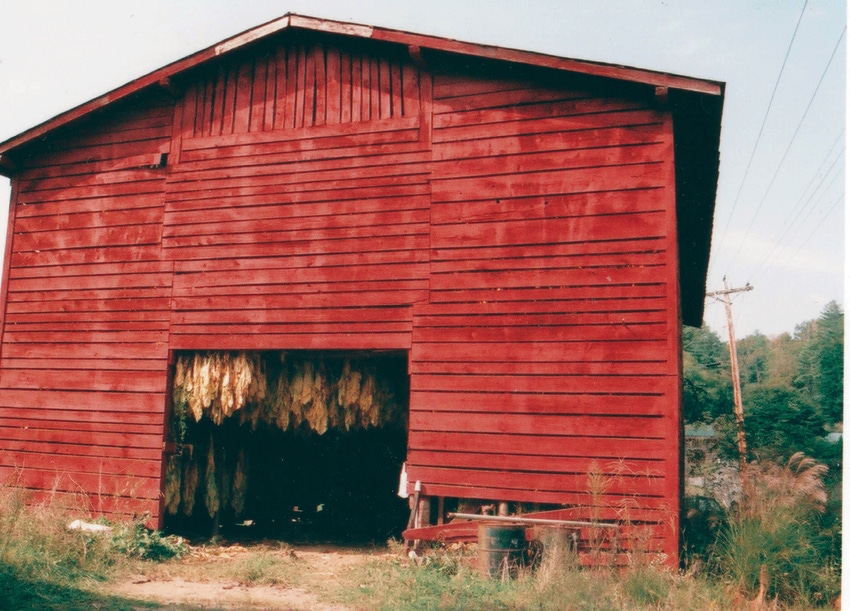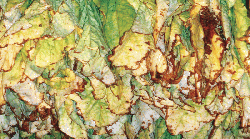
Why the 2015 tobacco crop was a near disaster
Some of the loss in production was due to a decline in plantings last spring. But the main explanation for the dismal performance was very low yields for the two leading types — burley and flue-cured — caused by very unfavorable weather conditions.Much of the burley crop was unusually late in arriving at market. This was especially apparent as in the mountainous burley-growing counties of western North Carolina and east Tennessee.
February 19, 2016

It’s official: The 2015 tobacco crop experienced a nearly disastrous drop in production compared to the season before.
USDA’s National Agricultural Statistics Service confirmed the dismal performance when it issued its Crop Production summary for 2015 last month.
Some of the loss in production was due to a decline in plantings last spring. But the main explanation for the dismal performance was very low yields for the two leading types — burley and flue-cured — caused by very unfavorable weather conditions.
Nationwide, production of all types came in at 711,236 million pounds, nearly 19 percent less than in 2914.

Despite unfavorable weather, both burley and flue-cured produced in 2015 — like this flue-cured leaf grown in Oxford, N.C., and cured at the North Carolina State Fair — scored well in ripeness. Photo by Chris Bickers
Despite unfavorable weather, both burley and flue-cured produced in 2015 — like this flue-cured leaf grown in Oxford, N.C., and cured at the North Carolina State Fair — scored well in ripeness. Photo by Chris BickersAmong the individual types, burley production was down a staggering 32 percent at 144,675 million pounds. The average yield for this type was down 266 pounds per acre at 1,834 pounds, a nearly 13 percent decline.
Flue-cured production was down 16 percent at 481,850 million pounds. The average yield was down 125 pounds per acre or five percent, at 2,210 pounds.
Fire-cured was down seven percent at 55,815 million pounds. The average yield was 3,145 pounds per acre, down just slightly from 2016.
Dark air-cured, grown in Kentucky and Tennessee like dark fire-cured, was down only 2.5 percent, at 17,050 million pounds.
Also hit hard were the two small types grown primarily in Pennsylvania. Pennsylvania seedleaf and Southern Maryland light air-cured were down 21 and 25 percent respectively at 3,760 million pounds and 3,520 million pounds.
The only types to enjoy a production increase were the cigar binder and cigar wrapper types grown in Massachusetts and Connecticut. Together, they were up seven percent at 4,566 million pounds. Yields were up almost 20 percent at 1,826 pounds per acre.
A want-to-forget season
But except in the Northeast, growers were anxious to forget about the 2015 season, said Matthew Vann, N.C. Extension tobacco specialist.
"This season was one that flue-cured growers will be glad to look at in the mirror," he said. “We had a great greenhouse season, but it seemed nothing went well after that."
Low prices were simply the final indignity for flue-cured growers in 2015. "(It was) a year that was a perfect storm for impeding growth, yield, harvestability and quality," said Taylor Williams, Extension tobacco agent in Moore County, N.C. “Other than organic tobacco, there will be few tobacco farmers who made any money last year, with many experienced and superior growers losing substantial amounts."
As 2016 began, marketing of the burley crop was continuing, and it was clear that the American burley crop was well short of the original target. “The volume is just not there,” said Jerry Rankin, a farmer and auction operator in Danville, Ky.
When the sales season began at Rankin’s warehouse, the average price was $1.60 a pound. “We had a few crops that brought $1.65 to $1.75. This was good domestic tobacco, but not ones (highest quality).”
The quality of burley that was still in barns seemed certain to improve in January, he said. “We had fogs in December, and the tobacco will take on a darker color.” That was expected to increase its appeal to buyers.
Contracted tobacco fared better than did auctioned leaf. A western Kentucky burley grower reported in December that he had sold 100,000 pounds to R.J. Reynolds. “All averaged $2,” he said. “(There were) no problems. Grading was fair.”
This farmer also said he grows dark air-cured tobacco and had recently sold 65,000 pounds with UST in Hopkinsville, Ky. “I averaged $2.45 per pound. (UST was) very fair to work with.”
But there hadn’t been much of an increase in the burley price by Dec. 18, when a central Kentucky grower delivered tobacco to Philip Morris USA. It was all Cutters and Tips and averaged $2.01 a pound, about what those grades attracted in 2014, he said. That didn’t make sense to him.
“It defies all logic that this short crop is bringing less than the previous year,” he complained.
Unusually late in arriving at market
After extreme rainfall earlier, it was very dry late in the season in the big burley-producing area of the Kentucky Bluegrass. "Except for showers on Sept. 25, much of the burley crop has gotten no rain this month," said Roger Quarles, a burley grower from Georgetown, Ky., in late September. "Curing this crop was a real challenge. We will do what we can, but this crop won't have the dark color we like to see. It's going to be light colored.”
Much of the burley crop was unusually late in arriving at market. This was especially apparent as in the mountainous burley-growing counties of western North Carolina and east Tennessee.
An auction to market this tobacco was organized late in the season. It was held on Dec. 14 at Planters Tobacco Warehouse in Asheville, N.C. But even that proved too early: Only about 40 percent of the tobacco delivered to the warehouse was new crop tobacco produced in 2015. The rest was carryover from 2014, which was not particularly appealing to buyers.
“The price range for most of the tobacco offered was $1.10 to $1.50 a pound,” said warehouseman Billy Anders. “The farmers were generally discouraged.”
But there was still substantial unsold burley leaf in western North Carolina and east Tennessee, Anders said, and he expected to hold another sale in Asheville at the end of January.
Killing frosts struck on Oct. 18-19 in much of the Tobacco Belt, and in some cases they were cold enough to qualify as freezes. The damage to leaf structure was intense and brought an end to the harvest season for most growers.
After several years, when the first killing frost fell relatively late, these occurred at what is about the historical average date, if not a little earlier.
"The severity of the frost was the problem more than the timing," said David Reed, Virginia Extension tobacco specialist. "There were temperatures as low as 26 degrees." His very rough estimate of loss in Virginia to the frosts and freezes was 1.25 million pounds.
Despite all this, auctions went relatively well for flue-cured. In Wilson, N.C., Mann Mullen, owner of Big M Warehouse, said, “We moved quite a bit of tobacco, and everyone seemed satisfied with the price. All tobacco received a bid, and all was sold.”
About the Author(s)
You May Also Like



